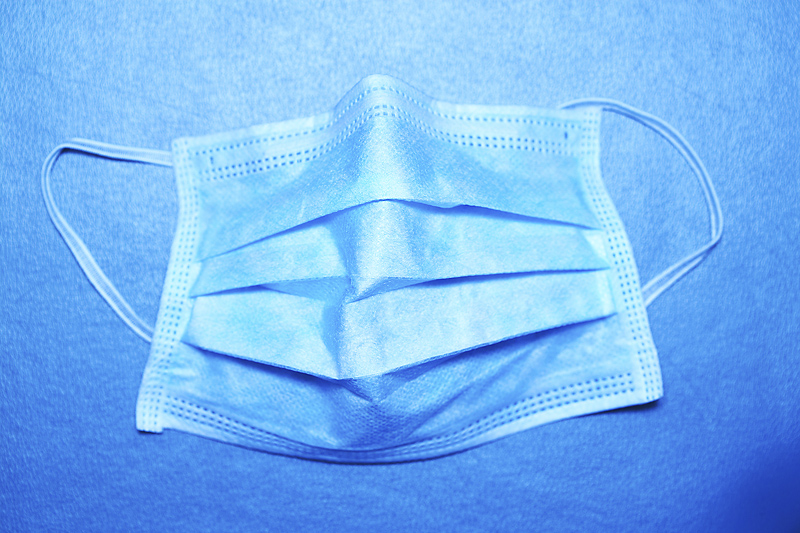
WEDNESDAY, Feb. 12, 2014 (HealthDay News) — Common infections, such as a cold or chickenpox, may increase the risk of stroke in children, according to several new studies.
The good news is that stroke in children is still quite rare, and one of the studies found that childhood vaccines appeared to offer some protection against childhood stroke.
“Children who’d had a stroke were most likely to have had a recent infection compared to controls [children without stroke],” said Dr. Heather Fullerton, an author involved with three studies. “There was a particularly strong association for an infection in the week before a stroke, almost a sevenfold increase in the risk of stroke.”
However, most parents don’t need to be overly concerned about stroke, Fullerton added. “Clearly, infections are very common and stroke is very rare in children. What’s going on is that infections are acting as a trigger for stroke in children who are likely predisposed to stroke,” she said.
Fullerton is director of the Pediatric Stroke and Cerebrovascular Disease Center at the University of California, San Francisco. She and her colleagues are scheduled to present the findings Wednesday at a American Stroke Association meeting, in San Diego.
The studies that Fullerton was involved in were all part of a larger study on the vascular effects of infection in children. At the time of their analysis on common infections and vaccines, as well as of a study on herpes viruses and the risk of stroke, the researchers had recruited 310 children who had experienced a stroke. Their average age was about 7 years old.
The third study, which looked at parvovirus — the cause of fifth disease — included blood samples from 162 children who’d had a stroke. The studies all had a comparison group of children who hadn’t had a stroke.
The first study found that having an infection less than one week prior to the stroke was linked to a 6.5-fold higher risk of stroke. The most common type of infection reported in this study was an upper respiratory infection.
This study also found that children who had only some, few or none of the recommended childhood vaccines had a 6.7 times higher risk of stroke. Having ever received a measles-mumps-rubella (MMR), polio or pneumococcus vaccine was significantly protective against stroke, according to the study.
In the second study, the researchers looked for evidence of a herpes infection prior to stroke. They tested for herpes simplex virus 1 and 2, cytomegalovirus, Epstein-Barr virus and the varicella zoster virus (more commonly known as chickenpox). They found evidence of a recent acute herpes virus in 41 percent of the children who had strokes. According to Fullerton, the most common herpes virus found was herpes simplex 1, which causes cold sores.
Fullerton said the parvovirus study was just an initial look to see if there was a connection. Out of 162 children with stroke, they found 10 with evidence of parvovirus B-19 and no infections in the 36 children without a stroke. “It was a surprise to find so many parvovirus infections in the stroke group. We will be following up on this study,” she said.
Because the studies were presented at a medical meeting, the data and conclusions should be viewed as preliminary until published in a peer-reviewed journal. The studies did not establish a cause-and-effect relationship, an expert noted.
“These were case-controlled studies looking at people with stroke versus controls — you’re not dealing with the general population. So, it should be noted that although there are strong associations, stroke in children is still a very uncommon thing,” said Dr. Kenneth Bromberg, director of the Vaccine Research Center and chairman of the department of pediatrics at the Brooklyn Hospital Center, in New York City.
“The point of these studies is to better understand stroke, not to alarm the public,” he said.
“Of all the potential risk factors they mentioned, the one we really have control over is chickenpox, and I recommend the chickenpox vaccine for protection against chickenpox, and to get increased protection against an uncommon thing — childhood stroke,” Bromberg said. He noted that researchers have been trying to develop a vaccine for herpes simplex virus 2, without success to date.
Study author Fullerton said that if parents notice the signs of illness in children, there is a treatment available for viral infections, if it’s begun early in the course of an infection. And, although neither expert could explain why, Fullerton said, “Kids who were more vaccinated tended to have lower rates of stroke. It’s one more reason to get your child vaccinated.”
Beside a recent infection, there aren’t many known risk factors for stroke in children. The one strong risk factor is a recent head or neck trauma, according to the American Heart Association. The AHA estimates that stroke affects nearly five of 100,000 children in the United States each year.
Signs parents should look for in children are the same as in adults:
- Sudden weakness or numbness on one side of the body or face
- Sudden difficulty speaking
- Confusion
- Sudden vision problems
- Sudden trouble walking
- Dizziness
- Sudden, severe headache
Children may also experience seizures during a stroke, particularly young children, according to a fourth study being presented at the stroke meeting by Australian researchers. Alarmingly, this study found that only about half of parents immediately called for emergency help.
The average time before parents brought children to an emergency room was nearly two hours, and some parents took as long as a day. But, getting to the hospital quickly is crucial when someone is having a stroke. Clot-busting medications may be able to stop a stroke and limit the damage it causes, but only when administered within hours of the time the symptoms started.
So, if you think you see signs of stroke in your child, call 911 immediately, the study’s author advised.
More information
Learn more about stroke in children from the National Stroke Association.
Copyright © 2025 HealthDay. All rights reserved.

